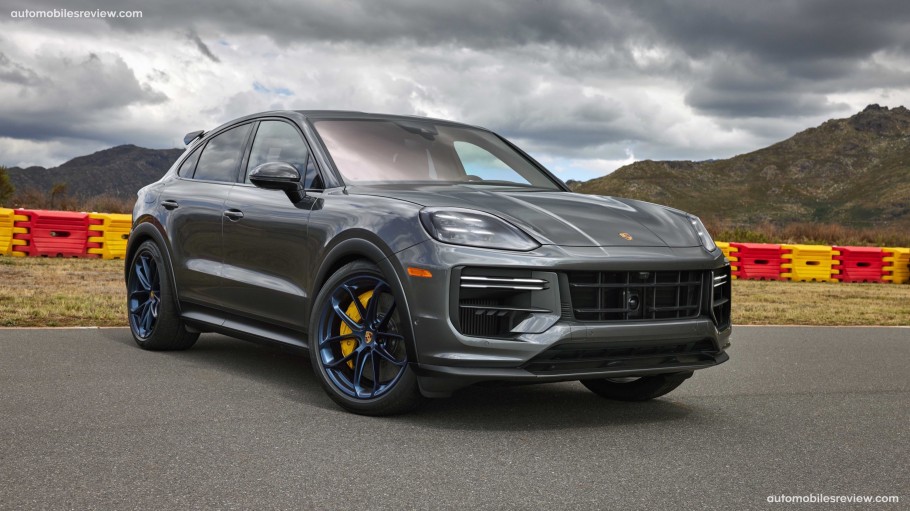Porsche Cayenne (2024)
Porsche Cayenne
Porsche has made significant improvements to its luxury SUV, the Cayenne, with a new digital display and control system, advanced chassis technology, and cutting-edge features. Michael Schätzle, the Vice President of Product Line Cayenne, calls it one of the most comprehensive product upgrades in Porsche's history. The Cayenne now features HD Matrix LED Headlights that adjust to different driving situations, an air quality system that cleanses the interior air, and a new infotainment display for front passengers to stream videos. With its upgraded design and more powerful engines, the Cayenne aims to be the sportiest car in its segment.
Porsche Driver Experience
Porsche has updated the display and control concept in the new Cayenne, with a focus on the driver's axis and optimising operation. The lever behind the steering wheel has additional functions for operating the driver assistance systems, and the automatic transmission selector lever is on the dashboard. The cockpit includes a fully digital 12.6-inch instrument cluster with variable display options, an optimised head-up display, and a 12.3-inch central Porsche Communication Management display. There is also a 10.9-inch display for the passenger side, which provides access to the infotainment system controls and the option of streaming video content on the road.
Refined design
The new Cayenne boasts an eye-catching appearance, featuring a redesigned front end, more pronounced wings, a new hood, and technically advanced headlights, all highlighting the vehicle's width. The rear end of the Cayenne has three-dimensional taillights, clean surfaces, and a new rear apron with an integrated number plate holder. The new colour palette includes three new colours, and the car comes with a range of 20, 21, and 22-inch wheels, allowing for individual configuration.
The new Cayenne is equipped with standard Matrix LED Headlights, with the HD Matrix LED Headlights being an optional feature. These lights are innovative with over 32,000 pixels per headlamp, and their advanced technology picks out other users on the road and blocks the high beam to prevent dazzling. The brightness of the modules can be regulated in over 1,000 steps depending on the driving situation.
The new Cayenne now features an air quality system that detects tunnel entrances and automatically activates air recirculation, and a sensor that detects the level of fine dust particles in the air and filters it if necessary. An ioniser removes germs and pollutants, providing benefits for allergy sufferers.
Additionally, the new Cayenne is equipped with a comprehensive range of new and improved assistance systems, including the active speed limiter, swerve assist, cornering assist, and Porsche InnoDrive as part of the adaptive cruise control, making it even safer in hazardous situations and traffic jams on motorways and main roads.

2024 Porsche Cayenne
Make the range between ride comfort and performance higher.
Porsche has now made available for the Cayenne a steel spring suspension that comes with Porsche Active Suspension Management (PASM) as a standard feature. The shock absorbers of the new suspension have two valves, which allow for separate rebound and compression stages and better performance in all driving situations. The comfort, handling and support during cornering, pitch, and roll have also been improved. Porsche offers an adaptive air suspension with two-chamber, two-valve technology that further enhances the driving experience. This improves the suspension characteristics, vehicle stability, on-road, and off-road handling compared to both the standard suspension and the previous model. Additionally, the adaptive air suspension enhances driving precision, performance, and reduces body movements during dynamic driving. The suspension has three driving modes to choose from: Normal, Sport, and Sport Plus.
The new hybrid model boasts increased power and a range of up to 90 kilometers on electric power.
The new Cayenne has three engine versions in Europe. The V6 engine in the previous Cayenne S has been replaced with a refined four-litre V8 biturbo engine. It has a maximum output of 349 KW (474 PS) and a torque of 600 Nm, which is 25 kW (34 PS) and 50 Nm more than its predecessor. It accelerates both the SUV and the SUV Coupé to 100 km/h in 4.7 seconds and has a top speed of 273 km/h. The entry-level Cayenne has a three-litre V6 turbo engine that generates 260 kW (353 PS) and 500 Nm, which is 10 kW (13 PS) and 50 Nm more than before.
The Cayenne E-Hybrid's powertrain is based on the six-cylinder engine, paired with a new electric motor that has been enhanced by 30 kW to 130 kW (176 PS). This leads to an increased combined output of 346 kW (470 PS). The E-Hybrid has a high-voltage battery that has been expanded from 17.9 kWh to 25.9 kWh, which enables a purely electric range of up to 90 kilometres according to WLTP. The new 11 kW on-board charger shortens the charging time to less than two and a half hours, regardless of the increased battery capacity. Additionally, the optimized e-hybrid driving modes increase the efficiency of the vehicle during the trip.
In most Porsche markets outside the EU, the Turbo GT is the top model in the Cayenne range, specifically designed for maximum on-road performance. It comes exclusively as a coupe and incorporates all the optimizations and innovations of the series. The four-liter V8 biturbo engine of the Turbo GT now delivers an increased output of 485 kW (659 PS) with an additional 14 kW (19 PS). With this power, the Cayenne Turbo GT can go from zero to 100 km/h in just 3.3 seconds, with a top speed of 305 km/h.



